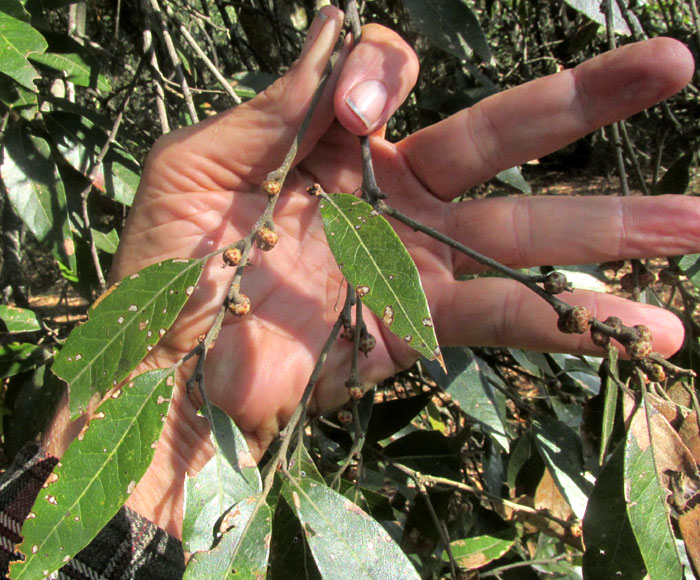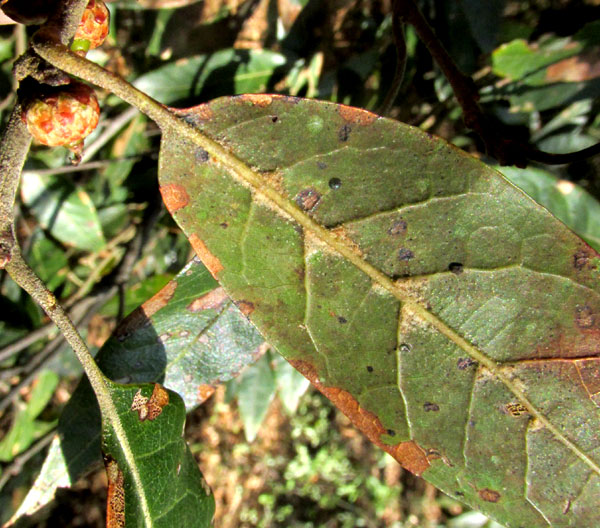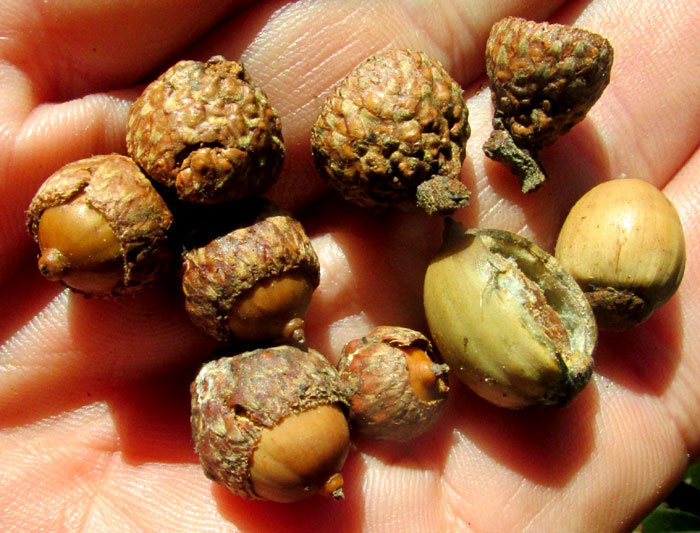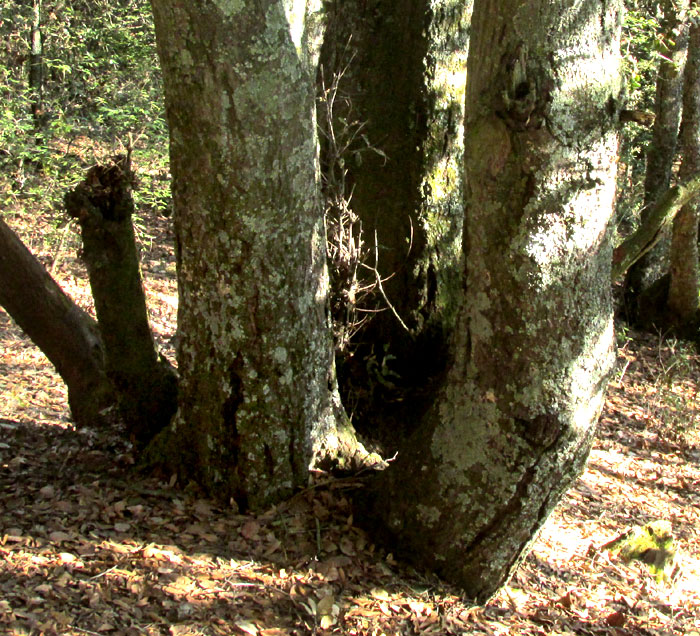Excerpts from Jim Conrad's
Naturalist Newsletter
entry from field notes dated July 1, 2022, on Cerro de la Cruz, at elevation ~2885m (~9465 ft), on the south side of the community of El Pinar, Amealco de Bonfil, Querétaro, MÉXICO, (~N20.17°, ~W100.17°)
QUERCUS LAURINA

In deep soil on the floor of a valley opening toward the east, right next to a big, steep-walled erosional ravine, a large oak tree bore the leaves and immature acorns shown above. Compared to leaves on other oak species in the region, these were unusually small, narrow, and bearing no hint of teeth or lobes on the margins. Blades were stiff, and each tip ended in a short, narrow, needlelike spine. Around 9 or so secondary veins arose from the prominent midveins, and the blades' upper surfaces were smooth and somewhat dull green. On the blades' undersides more important field marks were seen:

Most striking was that on old leaves, though most of the undersurfaces were hairless or nearly so, in the axils formed where secondary veins arose from midveins, there were dense clumps of slightly rusty-colored, short hairs. Also, the blades' margins were noticeably thickened into narrow rims. Note that the petioles reach maybe 15mm (2/3 inch).

Beneath the tree many acorns remained from the previous season's crop.

The tree had multiple trunks, probably resulting from having been cut many years ago, and sprouts on the stump growing up close together. A big majority of trees in the area produced such trunks.
All the above field marks and more point to QUERCUS LAURINA, occurring from the uplands of central Mexico south into Guatemala and El Salvador. Often the species is abundant in forests of oak and pine between the elevations of 2200-3200m (7200-10,500ft). In English the species bears no name, though it's known by many local names, none of which are in widespread use.
The literature reports that often leaves on this species bear one to five teeth along each margin, and many pictures on the Internet show such teeth. However, on our big tree I didn't find a single toothed leaf.
The hair tufts in the vein axils on the leaves' undersurfaces were conspicuous and a constant feature on all leaves. Such tufts are called "domatia" and have been documented as providing living quarters for mites. The 2021 study by Erin Coltharp and others entitled "Leaf Hair Tufts Function as Domatia for Mites in Quercus agrifolia (Fagaceae)" found that removing the tufts caused a significant reduction in mite population on the tree, though no benefit to the tree was observed by reducing the mite population.
It's assumed that by providing mites with homes on each leaf, trees benefit when carnivorous mite species prey on leaf-eating species, and other mites may feed on fungi causing leaf diseases. However, that's proving hard to document scientifically. Many oak leaves produce no hint of domatia, so it's apparent that any advantage domatia may provide isn't critical. Still, domatia occur in many plant families. O'Dowd and Willson in their 1989 "Leaf domatia and mites on Australasian plants: ecological and evolutionary implications" state that 28% of all wood-producing dicot plant families produce domatia.
This is another important oak species providing all the uses -- including medicinal, largely because of the high tannin content of most oaks -- typical of oaks in general. However, existence of Quercus laurina as a species different from all the others is hardly registered by anyone other than botanists. Around here they're all called "encinos."
This is yet another species first receiving scientific attention by Humboldt and Bonpland who collected it during their epoch-making exploration of the Americas. During that expedition they visited Mexico in 1803 and 1804, passing through Querétaro in 1804.